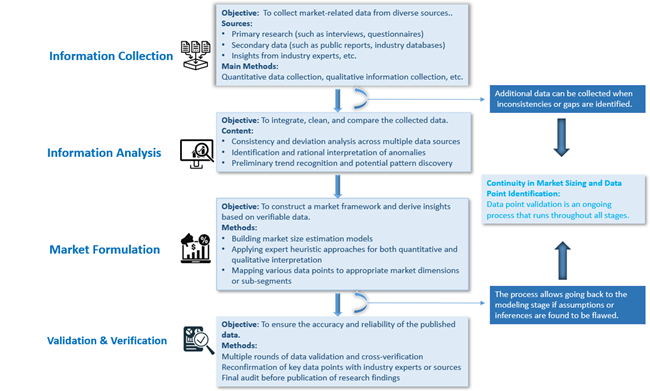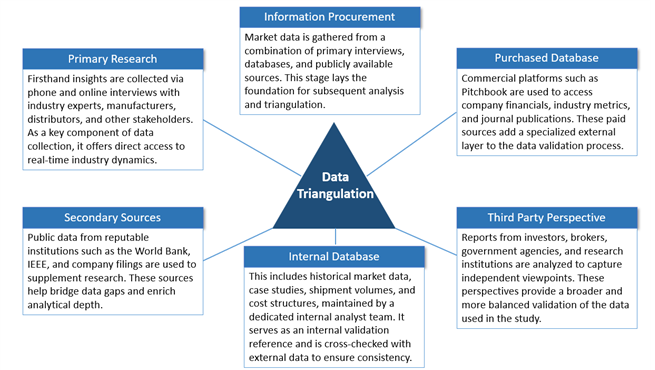The global Polyetheretherketone (PEEK) market is projected to reach USD 815.32 Million in 2024. It is expected to grow to USD 1941.44 Million by 2033, registering a compound annual growth rate (CAGR) of 10.12% during the forecast period (2025–2033).
The global PEEK market is led by Victrex (UK), which holds a dominant position with a 7,150-ton annual capacity—accounting for 60% of global capacity and a 2021 sales volume of 4,132.5 tons (market share: 53.55%).
- Solvay (Belgium): 2,500-ton capacity, 1,425 tons sold in 2021 (18.47% market share)
- Evonik (Germany): 1,800-ton capacity, 912 tons sold in 2021 (11.82% market share)
Industry Chain Overview
PEEK belongs to the synthetic resin manufacturing industry. Its upstream includes chemical raw materials and chemical fiber manufacturing—among which fluoroacetophenone (fluoroketone) is the most critical raw material—along with hydroquinone (a bulk commodity with oversupply) and sodium carbonate (low value). Equipment involved in its production includes injection molding machines, polymerization reactors, washing kettles, centrifuges, distillation units, and hot air dryers.
Among raw materials, fluoroacetophenone, hydroquinone, diphenyl sulfone, and sodium carbonate are key components. Fluoroacetophenone directly determines the quality of the final PEEK product and is used in quantities of approximately 0.7–0.8 tons per 1 ton of PEEK produced. Diphenyl sulfone serves as a solvent and is largely recyclable.
Downstream Applications: Due to its excellent properties—lightweight, corrosion resistance, high temperature resistance, and mechanical strength—PEEK has broad applications in high-end industries. In transportation, it significantly reduces aircraft fuel consumption and is a key material in aircraft composites. In industrial sectors, it is widely used in seals, bearings, and circuit boards thanks to its corrosion resistance and self-lubrication. In medical fields, PEEK is favored for bone implants and cranial repair due to its similar rigidity to human bones, imaging transparency (no artifacts in CT/MRI), and ease of processing. In automotive, PEEK is gradually replacing traditional materials in components like bearings, seals, and magnet wires due to its superior NVH performance and high heat resistance. In 3D printing, PEEK combined with carbon fiber meets the need for high-strength, high-temperature resistance. In robotics, it is valued for its strength, low weight, and durability, making it a strong candidate for future structural components.
High Technical Barrier and Long Certification Cycle
The synthesis of PEEK resin involves high technical barriers and significant capital investment (approx. USD 20 million per 1,000 tons of annual capacity). Production line setup takes around two years, with a ramp-up period of up to five years. New entrants often need 3–5 years for client certification and market development.
Barriers mainly lie in production technology and certification cycles. PEEK is used in:
- Electronics: precision fixtures and carriers requiring dimensional accuracy up to 0.01 mm, which injection molding often cannot meet.
- Other industries: requiring high-purity resin with consistent mechanical performance and batch stability.
Although PEEK has been under research for decades, few companies are capable of large-scale production. The gap between lab synthesis and industrial production is considerable, demanding deep technical expertise. In addition, the certification period for industrial production is relatively long.
Global Polyetheretherketone (PEEK) Market: Competitive Landscape
The global PEEK market is led by Victrex (UK), which holds a dominant position with a 7,150-ton annual capacity—accounting for 60% of global capacity and a 2021 sales volume of 4,132.5 tons (market share: 53.55%).
Other key players include:
Solvay (Belgium): 2,500-ton capacity, 1,425 tons sold in 2021 (18.47% market share)
Evonik (Germany): 1,800-ton capacity, 912 tons sold in 2021 (11.82% market share)
By 2027, if planned capacity comes online as scheduled (construction cycle of 3–5 years), global PEEK production capacity is expected to reach 23,000 tons annually, with China contributing 11,000 tons—representing 49% of the total—gradually taking a leading role.
Depending on grade and purity, PEEK prices range from USD 40,000 to 130,000 per ton. Chinese-made PEEK has a notable cost advantage, with prices around USD 40,000 per ton.
Report Framework and Key Highlights:
Market Dynamics: Identification of major market drivers, restraints, opportunities, and challenges.
Trend Analysis: Examination of ongoing and emerging trends impacting the market.
Competitive Landscape: Detailed profiles and market positioning of major players, including market share, operational status, product offerings, and strategic developments.
Strategic Analysis Tools: SWOT Analysis, Porter’s Five Forces Analysis, PEST Analysis, Value Chain Analysis
Market Segmentation: By type, application, region, and end-user industry.
Forecasting and Growth Projections: In-depth revenue forecasts and CAGR analysis through 2033.
This report equips readers with critical insights to navigate competitive dynamics and develop effective strategies. Whether assessing a new market entry or refining existing strategies, the report serves as a valuable tool for:
Industry players
Investors
Researchers
Consultants
Business strategists
And all stakeholders with an interest or investment in the Polyetheretherketone (PEEK) market.
Global Polyetheretherketone (PEEK) Market: Segmentation Analysis and Strategic Insights
This section of the report provides an in-depth segmentation analysis of the global Polyetheretherketone (PEEK) market. The market is segmented based on region (country), manufacturer, product type, and application. Segmentation enables a more precise understanding of market dynamics and facilitates targeted strategies across product development, marketing, and sales.
By breaking the market into meaningful subsets, stakeholders can better tailor their offerings to the specific needs of each segment—enhancing competitiveness and improving return on investment.
Global Polyetheretherketone (PEEK) Market: Market Segmentation Analysis
The research report includes specific segments by region (country), manufacturers, Type, and Application. Market segmentation creates subsets of a market based on product type, end-user or application, Geographic, and other factors. By understanding the market segments, the decision-maker can leverage this targeting in the product, sales, and marketing strategies. Market segments can power your product development cycles by informing how you create product offerings for different segments.
|
ATTRIBUTE |
Details |
|
|
Time Coverage |
Historical Year: 2020– 2024 Base Year: 2024 Estimated Year: 2025 Forecast Year: 2025 - 2033 |
|
|
Market Segmentation |
||
|
By Type |
Unfilled Carbon Filled Glass Filled |
|
|
By Application |
Aerospace Medical Energy Automotive Food and Beverage Industry Electronics and Electrical Other |
|
|
By Company |
Victrex Solvay Evonik Joinature Polymer Changchun Jida Special Engineering Plastics Zhejiang Pfluon Technology Shandong Haoran Shandong Junwu High-Performance Polymers Jilin Juke Hi-Tech Shenzhen WOTE Advanced Materials |
|
|
By Region |
North
America |
|
Report Framework and Chapter Summary
Chapter 1: Report Scope and Market Definition
This chapter outlines the statistical boundaries and scope of the report. It defines the segmentation standards used throughout the study, including criteria for dividing the market by region, product type, application, and other relevant dimensions. It establishes the foundational definitions and classifications that guide the rest of the analysis.
Chapter 2: Executive Summary
This chapter presents a concise summary of the market’s current status and future outlook across different segments—by geography, product type, and application. It includes key metrics such as market size, growth trends, and development potential for each segment. The chapter offers a high-level overview of the Polyetheretherketone (PEEK) Market, highlighting its evolution over the short, medium, and long term.
Chapter 3: Market Dynamics and Policy Environment
This chapter explores the latest developments in the market, identifying key growth drivers, restraints, challenges, and risks faced by industry participants. It also includes an analysis of the policy and regulatory landscape affecting the market, providing insight into how external factors may shape future performance.
Chapter 4: Competitive Landscape
This chapter provides a detailed assessment of the market's competitive environment. It covers market share, production capacity, output, pricing trends, and strategic developments such as mergers, acquisitions, and expansion plans of leading players. This analysis offers a comprehensive view of the positioning and performance of top competitors.
Chapters 5–10: Regional Market Analysis
These chapters offer in-depth, quantitative evaluations of market size and growth potential across major regions and countries. Each chapter assesses regional consumption patterns, market dynamics, development prospects, and available capacity. The analysis helps readers understand geographical differences and opportunities in global markets.
Chapter 11: Market Segmentation by Product Type
This chapter examines the market based on product type, analyzing the size, growth trends, and potential of each segment. It helps stakeholders identify underexplored or high-potential product categories—often referred to as “blue ocean” opportunities.
Chapter 12: Market Segmentation by Application
This chapter analyzes the market based on application fields, providing insights into the scale and future development of each application segment. It supports readers in identifying high-growth areas across downstream markets.
Chapter 13: Company Profiles
This chapter presents comprehensive profiles of leading companies operating in the market. For each company, it details sales revenue, volume, pricing, gross profit margin, market share, product offerings, and recent strategic developments. This section offers valuable insight into corporate performance and strategy.
Chapter 14: Industry Chain and Value Chain Analysis
This chapter explores the full industry chain, from upstream raw material suppliers to downstream application sectors. It includes a value chain analysis that highlights the interconnections and dependencies across various parts of the ecosystem.
Chapter 15: Key Findings and Conclusions
The final chapter summarizes the main takeaways from the report, presenting the core conclusions, strategic recommendations, and implications for stakeholders. It encapsulates the insights drawn from all previous chapters.






